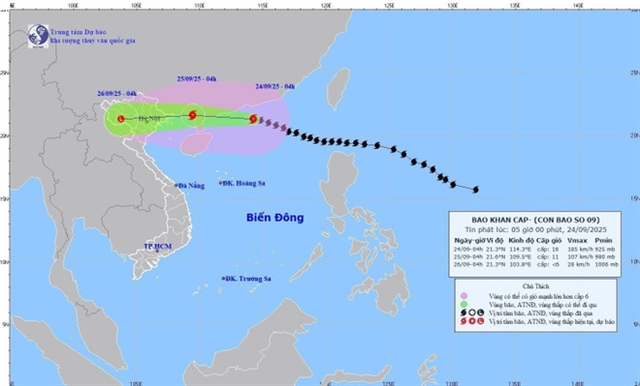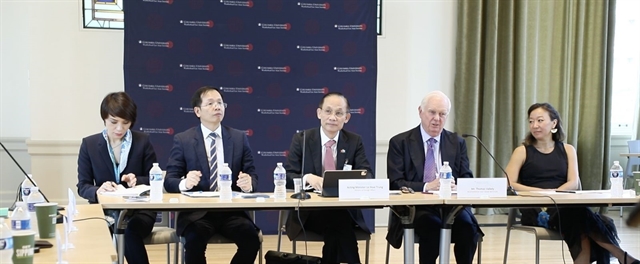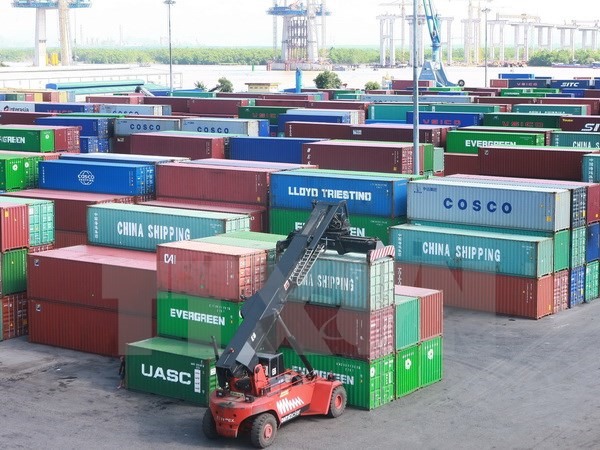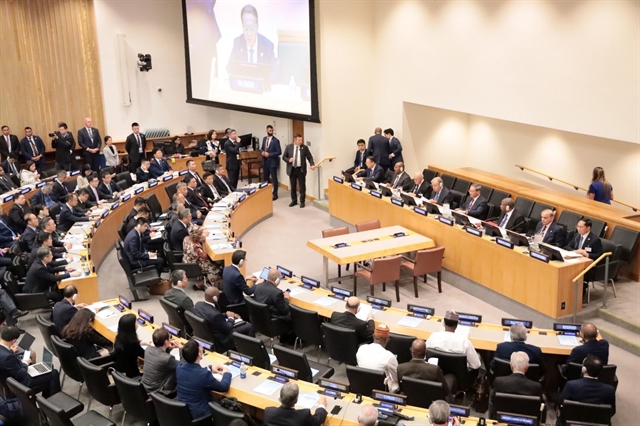 Society
Society

Việt Nam’s medium-term economic outlook remains positive, with GDP growth rate projected to accelerate slightly to 6.3 per cent in 2017, according to the latest World Bank East Asia and Pacific Economic Update, released yesterday.
 |
| Việt Nam’s medium-term economic outlook remains positive, with GDP growth rate projected to accelerate slightly to 6.3 per cent in 2017. — VNA/VNS Photo Lâm Khánh |
HÀ NỘI — Việt Nam’s medium-term economic outlook remains positive, with GDP growth rate projected to accelerate slightly to 6.3 per cent in 2017, according to the latest World Bank East Asia and Pacific Economic Update, released yesterday.
The growth is underpinned by buoyant domestic demand, rebounding agricultural production and strong export-oriented manufacturing, aided by a recovery in external demand, the report says.
The country’s inflationary pressures will remain moderate, reflecting stable core inflation and the tapering of administrative price hikes. The current account is expected to remain in surplus, albeit at a lower level as stronger import growth resumes.
Over the medium term, growth is projected to stabilize at around 6.4 per cent in 2018–19, accompanied by broad macroeconomic stability.
Barring extreme weather-related shocks, poverty is expected to fall further.
The report also mention risks and challenges facing Việt Nam and offers some recommendations for the country. The World Bank says that domestic and external risks call for continued macroeconomic prudence. In view of resilient growth momentum, solidifying macroeconomic stability and rebuilding policy buffers should remain the top priority.
Lowering the fiscal deficit will help to contain rising risks to fiscal sustainability and provide fiscal space to accommodate potential future shocks.
Containing risks from rapid credit growth requires continued improvements in supervision and prudential regulation.
The longer-term challenge for Việt Nam is to sustain rapid growth and poverty reduction.
Considerable gains are possible from structural reforms that alleviate constraints on productivity growth, including through SoE reforms, further improvements in the business environment and more efficient factor markets for land and capital.
The gender wage gap remains a concern, particularly in the urban FDI sector where the average wage for males rose even as that for females marginally declined, unlike in rural areas where the increase was proportionate.
Regional outlook
“The recovery of the global economy and the expansion of global trade are good news for the East Asia and Pacific region and its continued success in improving living standards,” said Victoria Kwakwa, World Bank Vice President for the East Asia and Pacific Region.
“The challenge will be for countries to strike a balance between prioritising short-term growth and reducing medium-term vulnerabilities, so that the region has a stronger foundation for sustained and inclusive growth,” she said.
“The improved prospects for global growth offer a window of opportunity for countries to reduce vulnerabilities while pursuing reforms that can yield growth dividends over the longer term,” said Sudhir Shetty, WB Chief Economist for the East Asia and Pacific region. “Reducing risks to financial sector stability and strengthening competitiveness, including through deeper regional integration, remain priorities.”
The report notes that improved global growth prospects and continued strong domestic demand underpin a positive outlook for the developing economies of East Asia and the Pacific.
Stronger growth in advanced economies, a moderate recovery in commodity prices, and a recovery in global trade growth, are the favorable external factors that will support the economies of developing East Asia and Pacific to expand by 6.4 per cent for 2017, it says.
Solutions
To maintain resilience against risks, the report calls for countries in the region to move away from measures aimed at short-term growth and towards policies that address financial sector and fiscal vulnerabilities.
These measures include: strengthening supervision and prudential regulation in countries experiencing rapid growth in private-sector credit and debt; reforming tax policies and administration to help boost revenue collection; and being ready to tighten monetary policy if warranted by the pace of interest rate increases in advanced economies.
Structural reform priorities differ across countries. Sustained reforms of the state-owned enterprise sectors in China and Việt Nam can improve growth prospects. The Philippines, Thailand, Lao PDR and Cambodia will benefit from continued improvements in public investment management systems to support expanding public infrastructure programs. In Indonesia, liberalising the regulations for foreign investment remains important.
Despite success in reducing poverty, high and rising inequality is a growing concern, as are falling mobility and growing economic insecurity. For lasting inclusive growth, measures to reduce extreme poverty must be accompanied by policies that broaden access to quality services and more productive jobs, and stronger social protection systems that reduce the consequences of adverse shocks. — VNS




.jpg)